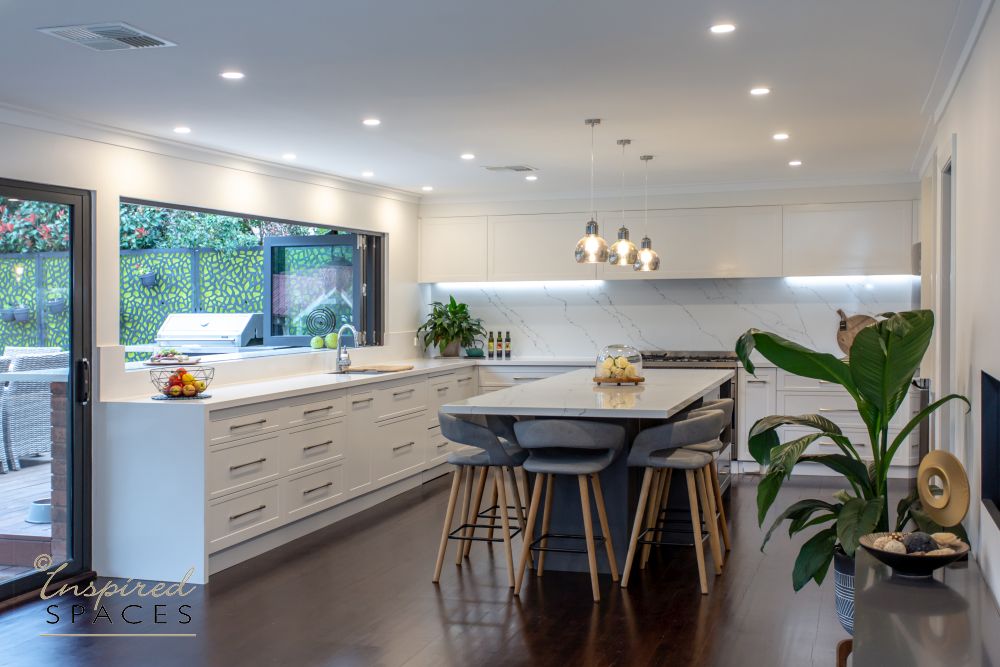Choosing the right windows for your home is one of the most important decisions you are faced with. This is because they have such an impact on both the outside appearance of your home and the interior look. They can frame a view, provide a breeze and allow beautiful natural light to flow into your home.
They will all have their pros and cons. As a first step, let’s guide you through the options of the window frame material that is right for you.
What are the different frames available?
The frames most commonly used in Australia are made out of either powder coated aluminium, timber or Vinyl/uPVC. And in recent years, composite windows have come onto the market and seem to be growing in popularity.
Which way to go depends on the style you wish to achieve. For example, if you love the Hamptons look, you can’t go pass timber windows. They can look spectacular in the right environment, providing a warm and natural aesthetic. Another advantage is their energy efficiency thanks to the natural insulating properties of timber. Be aware though, that wood can be expensive as well as high maintenance. Timber windows will also have a shorter life span than other materials.
If a contemporary, minimalist style is yours, opt for the sleek frames of aluminium windows. They are durable, gentle on your wallet and practically maintenance free. A downside is that Aluminium can lose heat, so the type of glass used for these frames will have an impact on thermal efficiency of your home.
Vinyl or uPVC have good insulating properties, are low maintenance and great for your budget. However, they will discolour over time and are not good for the environment!
Relatively new on the market are Composite windows. These combine 2 framing materials in order to get the best features of each. They’ll give you the warm, visual appeal of timber frames internally with a durable, powder-coated aluminium frame externally. Minimal maintenance and energy efficient but a more expensive option than others.
Window types for your design style
Once you have decided on the material, there are 6 basic window types to choose from, each with a lot going for them but also with some downsides. Which ones will be the right windows for you?

1. Sliding Windows for classic interiors
If you want an easy to operate window with a simple and classic design, you can’t go wrong with a sliding window. They are still very popular nowadays.
| Advantages | Disadvantages |
| Easy to use | Hard to clean on the outside |
| Durability | Sliding slot can gather dust |
| Energy efficient | |
| Low maintenance |
2. Side Hung Windows provide timeless design
Side hung windows, also called casement windows, have a timeless appeal to them while offering excellent ventilation.
| Advantages | Disadvantages |
| Good ventilation control | Limited security |
| Good weather sealing properties | Fly screen installation needs to be on the inside |
| Energy efficient | Can’t be left open |
| Noise insulator | |
| Provides good airflow |
3. Top Hung Awning Windows for a clean look
Hinged at the top and open out to varying degrees, top hung awning window have a clean look, but usually provide poor ventilation.
| Advantages | Disadvantages |
| Good weather sealing properties | Do not provide a lot of airflow |
| Energy efficient | Fly screen installation needs to be on the inside |
| Noise insulator | |
| Can be left open in wet weather |
4. Double Hung Windows provide average ventilation
Double hung windows slide vertically up and down. Both panels can move independently or just one can move and the other is fixed. Keep in mind that double hung windows only allow half the window space to be open at one time so they only provide average ventilation. But don’t they look stunning in a renovated period house.
| Advantages | Disadvantages |
| Easy to clean | Not as airtight as other windows |
| Versatile | Limited ventilation |
| Energy efficient |
5. Bi-fold Windows connect indoors and outdoors

Bi-fold windows are made in two or more panels. They fold back like a concertina and stack at one end or both ends of the window frame. They allow the window to be completely open for the inside space to connect with the outdoors. Bi-folds are great for long wide windows that have dramatic outlooks and can be used as a servery onto your deck area.
| Advantages | Disadvantages |
| Easy to use and clean | Costs – they can be expensive |
| Durability | They are hard to screen |
| Energy efficient | Open panels protrude to interior or exterior of building |
| Maximum clear opening |
6. Louvre Windows for excellent ventilation
Louvre windows consist of blades made out of glass, aluminium or timber and are great for ventilation. They can be left open at an angle in light rain. The downside is that they are a nightmare to clean.
| Advantages | Disadvantages |
| Low maintenance | Not as secure as other windows |
| Easy to use | Can get drafty |
| Versatile | Cleaning |
| High control over natural light and airflow |
Optimum window positioning for inside and outside
More challenging than deciding on the type of window is to determine the optimum position of your windows. This is because they affect both the exterior and the interior.
With a big impart on the curb appeal of your house, you might wish to put a lot of thinking into the windows facing the front.
On the inside, the clever placement of the windows make your rooms feel balanced. It also decides on how successful you can furnish the space and hence determines its functionality. Frame and enhance your windows with the perfect window treatment to round up your stunning interior styling.
In Australia, the sun is orientated toward the north for the most part of a year. If you want to make the most of the winter sun, have larger windows on this side of your house. Summer months will require an awning over these windows to provide shade.
South-facing sides of your home will typically receive direct summer sunlight in the morning or late afternoon. But in winter may not receive much sunlight atall. Choose smaller windows on this side of your home if you want to trap heat indoors during winter months and limit heat gain in summer.






Leave A Comment Or Ask A Question